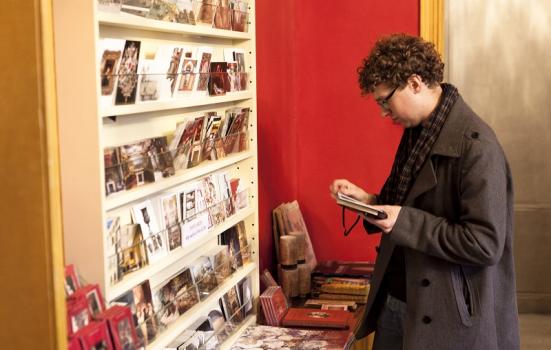Since opening its museum shop two years ago, the Sir John Soane Museum has seen it go from strength to strength, developing a valuable new income stream. Xanthe Arvanitakis explains how.

Sir John Soane Museum
The first thing to recognise, when thinking about how to get the most out of your museum or gallery shop, is how key the shop is to the overall visitor experience. At the Sir John Soane Museum, our beautifully restored regency style Soane Shop is the last room our visitors pass through before leaving. How much our visitors spend in our shop is a direct reflection of how much (or little) they have enjoyed their visit.
It’s important to really delve into who your visitor is. This insight will form the foundations for product development, pricing and merchandising. We know that half our visitors are overseas tourists and three quarters of all our visitors will only visit us once. We also know that our average visitor is over 55. They are looking for a memento of their visit, maybe something that reflects or is inspired by the collection and the experience they’ve had. It’s also likely they will be packing it into a suitcase, so size is also a consideration.
How much our visitors spend in our shop is a direct reflection of how much (or little) they have enjoyed their visit
Onto the creative and fun part: product development. We are the UK’s smallest national museum, with just over 110,000 visitors each year. We don’t have the scale to develop a full range of bespoke products, so we are always trying to balance the need to create something unique that reflects the museum and our collection, with enough bought-in products to give our visitors a great shopping experience. We work with many partners to achieve this. For example, we have developed some beautiful ties and scarves inspired by our collection, but supplement these with appropriate bought in ties and scarves. Likewise with our 'mini model' range, we commissioned a bespoke mini model of the house and have bought in models of key London landmarks to provide a range of options for our visitors.
Sometimes the product you develop with a partner will be commercially viable and can be sold elsewhere, generating valuable additional licensing income. We have successfully developed this model with both Fox & Chave and Reine d’Amour, a jewellery maker.
And don’t forget your books. Most of our visitors are looking for a guide or informative book which they can refer to once they are back home. Our guide books are our best-selling books, and because we publish them ourselves we generate a very high profit from them. We have a range, starting with £5 and £10 guides to £40 hardbacks, which we sell on the front door.
Beware of falling into the trap of taking your collection so literally that you end up with a very biased range of products – too masculine or feminine, for example, or simply not the best fit for your visitor. But also don’t be afraid to experiment. If you would like to test a new category of product, then first try a small, bought-in range before investing in developing your own range. We have used this technique successfully for more seasonal products like chocolates.
I’ve not mentioned exhibition merchandise because our visitors are not so heavily influenced by our exhibitions. They are primarily visiting us as a must-see historic house. But we always work with the exhibition team to review what’s coming up and interrogate whether there is a merchandise opportunity.
Finally, pricing and merchandising are both key to a successful shop. We have a very limited budget but will always ensure we get a professional merchandiser in at least twice a year to help us refresh how we are displaying our products, work on our labeling and think about what to focus on next. We will usually combine this with a big selling opportunity, such as our Christmas window and offer.
Over the last two years our small shop has grown from strength to strength with increased income generated by our visitors spending more. We couldn’t have done this without the support of a number of organisations and individuals. The Association of Cultural Enterprises has been an essential resource for product development, training and providing access to a wide network of like-minded individuals from whom to seek advice. The Museum and Heritage Show, Top Drawer, Museum Expressions and Home are all good places to meet new suppliers. But we have also forged relationships with art schools, such as the Royal College of Art, to develop interesting student collaborations.
Xanthe Arvanitakis is a member of the Association for Cultural Enterprises and judge for its Best Product Awards 2015. She is Director of Operations and Commercial at the Sir John Soane Museum, London.
www.soane.org




